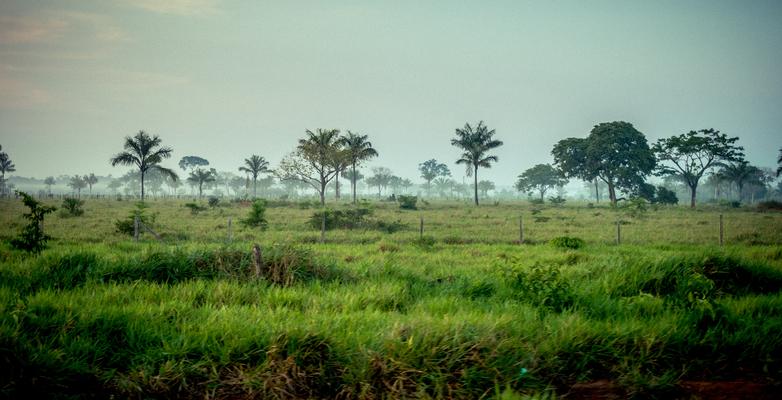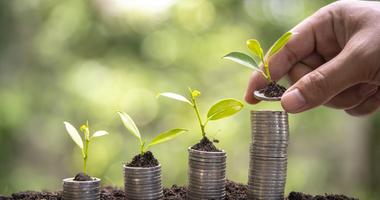
Debt-for-Nature Swaps: The Right Kind of Climate Finance or Not?
Many countries are already saddled with high levels of debt and cannot afford to enter into more loan agreements. Multilateral institutions are working to diversify ways of easing the debt burdens of these emerging countries. This is where debt-for-nature swaps may be able to help.
6 min read
By Georgie Wilson, Science and Solutions Intern
As climate change continues to ramp up, leaders around the world are being forced to look at long-term solutions.
Despite COP 29 – the latest of the UN’s yearly climate conferences, the most important global climate forums – being months away, leaders around the world are already preparing to focus on climate finance as its importance grows alongside the urgency of climate action.
The conference will take place in Baku, Azerbaijan, where nations will agree to a new amount of finance to mobilize support for adaptation, emissions reduction, and loss and damage costs in emerging countries.
A core tenet of climate finance rests on innovative mechanisms to mobilize funding, such as green bonds that support developing countries’ environmental projects while addressing sovereign debt. Last year’s COP 28 included the creation of a task force on Sustainability-Linked Sovereign Financing for Nature and Climate to support efforts advancing innovative financing and credit enhancement for developing countries.
It is well known that many countries are already saddled with high levels of debt and cannot afford to enter into more loan agreements. In fact, 34 out of 59 emerging economies that are the most vulnerable to climate change also face a high risk of financial crises in the next two years.
Therefore, multilateral institutions are working (albeit slowly) to diversify ways of easing the debt burdens of these emerging countries.
This is where debt-for-nature swaps may be able to help.
Debt-for-Nature Swaps: What are they?
According to the World Bank, a debt-for-nature swap is defined as “the exchange of a debtor country’s external obligation for that country’s agreement to use local currency instruments (usually either cash or ‘environmental bonds’) to support a specific environmental project.”
In simpler terms, debt-for-nature swaps work to help governments free up debt obligations to support conservation or preservation efforts without incurring financial instability.
Debt-for-nature swaps usually involve the use of a tweaked version of the green bond known as the “blue bond” aimed at marine conservation projects. However, there can be bonds directed towards other climate and conservation efforts that fall under debt-for-nature swaps.
These swaps are distinct from debt-for-adaptation swaps, which have been more recently introduced for funding climate adaptation activities (such as building resilience against sea level rise or drought), rather than a focus on conservation.
But how exactly does a “debt-for-nature swap” work?
Essentially, there are two common forms of debt-for-nature swaps, yet they provide similar financial benefits and agreements.
The form of debt-for-nature swapping that is the most common is a three-party swap, where a non-governmental organization (NGO) buys debt from a creditor country at a steep discount. The debt is then restructured by the NGO on the condition that the debtor country will provide funds in its local currency equivalent to conservation efforts. Then, the NGO sells the debt back to the debtor country at a significantly lower price, and the debt is forgiven if the leftover capital saved from the higher debt obligation is put towards conservation investments.
Another form of a debt-for-nature swap is a bilateral swap between debtor and creditor countries. In this swap, the developed country (the creditor) restructures a portion of the debt obligations that an emerging country (the debtor) has with them, then sells this debt at a discounted price to the debtor. This lower burden of debt usually comes with the conditions that interest payments on the restructured debt or profits from the discounted sale will be put towards conservation initiatives.
The key difference is that in a three-party swap, the NGO collaborates with the debtor country on the conservation measures that should be implemented, whereas in a bilateral swap the creditor country decides the policy agenda without extensive input from the debtor.
In both of these transactions, the basic components include either the restructuring or reduction of debt of a emerging country, a bond issuance to commit regular bond payments to a nature-based environmental project, and credit support from international institutions in order to allow for a lower interest rate and longer maturity on these bonds.
History of Debt-for-Nature Swaps
While the first debt-for-nature swap was recorded in 1987 between the Bolivian government and Conservation International, this climate finance mechanism has been flying under the radar up until the last few years.
This first swap involved Conservation International acquiring $650,000 USD of Bolivian debt at a discount of $100,000, under the conditions that the Bolivian government would protect 1.6 million hectares of the Bolivian Amazon that houses Indigenous communities and endangered wildlife.
Since then, there have been over 100 swaps in dozens of low-income countries, targeting projects on forest conservation, biodiversity, and more.
Countries including Costa Rica, Belize, Barbados, and Seychelles have entered into debt-for-nature swaps. In 2023, Ecuador participated in the world’s biggest debt-for-nature swap to date with Credit Suisse buying back approximately $1.6 billion dollars of debt for $644 million, easing repayment costs across 17 years and aiming to advance conservation efforts in the Galapagos.
Successes, Failures, and Risks
Debt-for-nature swaps have been seen by some to help balance the environmental and fiscal stability of developing countries.
The Nature Conservancy has been one of the principal supporters of this financial mechanism, conducting debt-for-nature swaps concerning marine conservation with Seychelles, Barbados, and Belize.
These transactions have been lauded as a win-win scenario for emerging countries as major financial burdens can be further exacerbated when facing the climate crisis. With deals like those from The Nature Conservancy, millions can potentially be put towards conservation efforts while lowering debt burdens for these countries.
However, there are growing concerns as this financial instrument becomes more popular.
Debt-for-nature swaps are inherently a complicated process, as it involves a complex preparation and negotiation process that can take years. These proceedings have been criticized for being “secretive” – lacking transparency and access for civil society participation.
For example, despite its implementation bringing attention to the importance of conservation funding in highly debt-distressed countries, the first swap between Bolivia and the Conservation International was delayed and seen as controversial due to misperceptions of the swap from press outlets and a lack of transparency from Bolivian organizations.
Another concern of debt-for-nature swaps is the credibility of these transactions. Despite being around for decades, there are worries of debtor countries’ commitment to conservation. Developing countries’ governments must be willing to execute high-level conservation commitments in order for this transaction to be truly effective. Additionally, debt-for-nature swaps run the risk of greenwashing at the hands of the banks and institutions deciding on project scope.
Already, there have been reports of a lack of understanding concerning debtor countries’ sovereignty within debt-for-nature swaps. In the case of Ecuador’s recent debt swap, critics have argued that the government has a lack of ability in determining truly effective conservation strategies and still faces funding gaps.
Finally, despite debt-for-nature swaps aiming to improve countries’ debt profiles, it is only a small dent in the obligations many of these nations hold. While Belize’s debt swap with the Nature Conservancy relieved 12% of GDP in debt obligations, its original burden was a 125% debt-to-GDP ratio.
So, despite debt-for-nature swaps growing over recent years, it’s clear that there needs to be strong enforcement, institutional support, and other finance mechanisms to supplement this debt relief effort. As the financial needs of developing countries increase in size and scale, it is important that support be mobilized from a wide variety of reliable sources.
What Next?
As we continue to explore climate finance options to face the climate crisis, debt-for-nature swaps are just one option in a growing list.
While these swaps cannot act alone in financing sustainability projects, they may, with appropriate regulatory guardrails, be one option in reducing the staggering levels of external debt that developing countries face.
Ready to learn more about the future we’re reaching for? Join us in New York City this April for a training event unlike any other.
From April 12-14, take bold climate action, join forces with fellow environmental advocates, and make sure all of our voices are heard in demanding a cleaner, greener future at our latest Climate Reality Leadership Corps training.
Be part of the movement for a better tomorrow. Join us in NYC this April.




